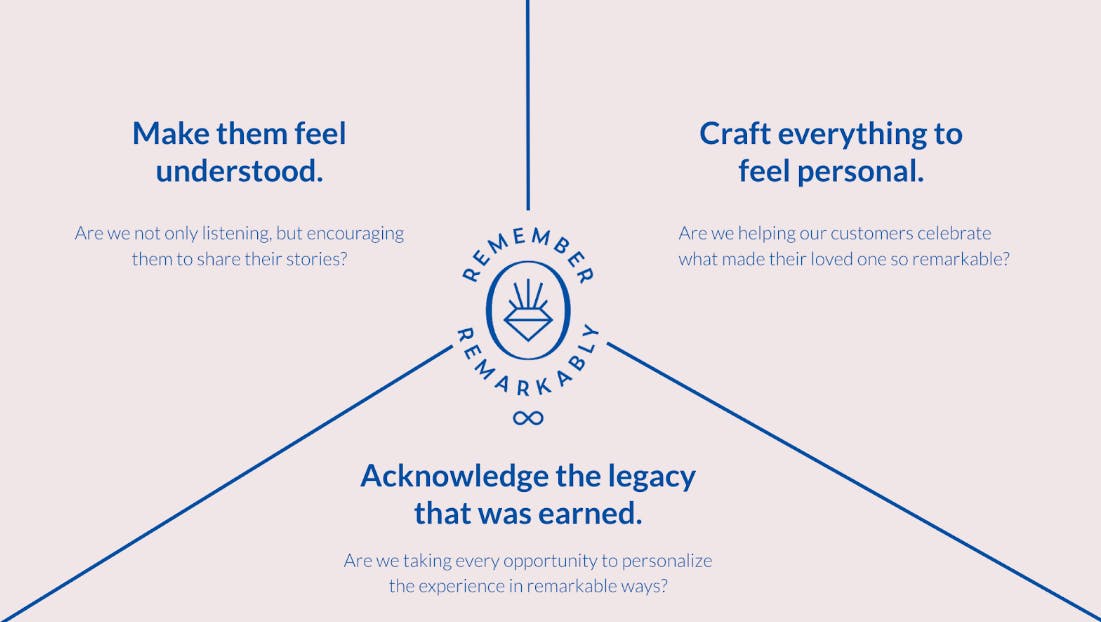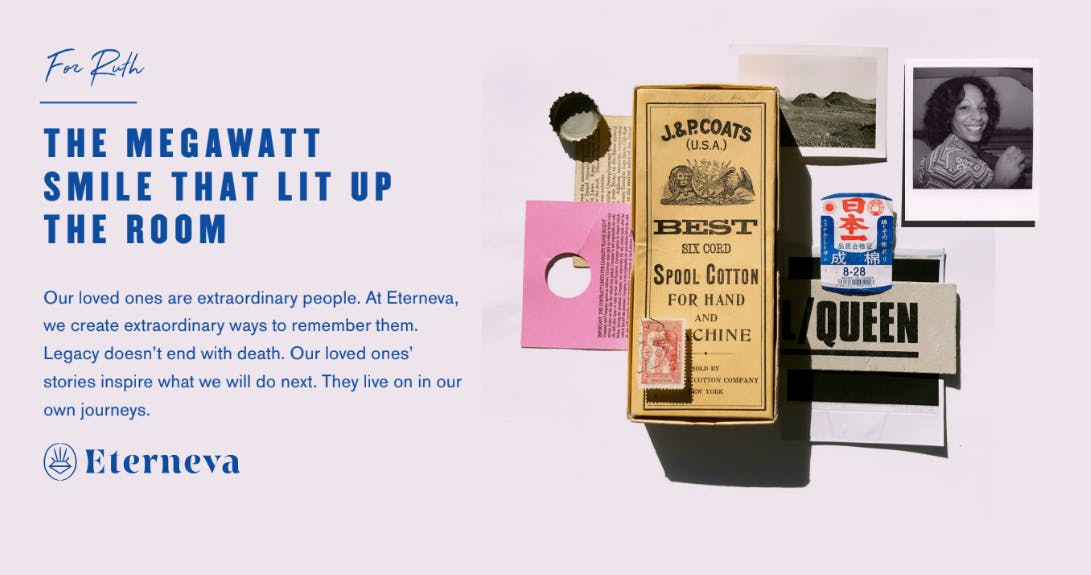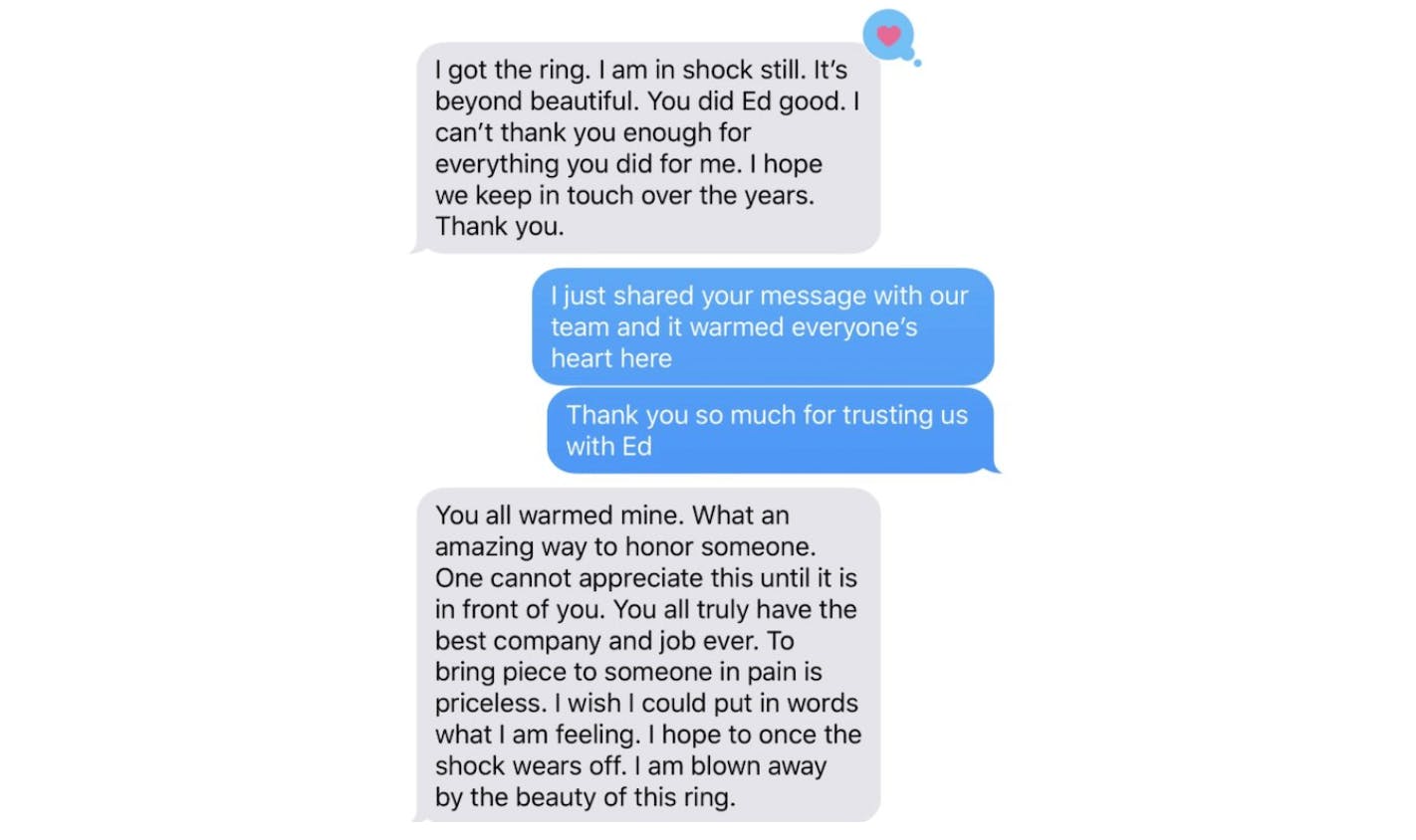What Does Brand Strategy Look Like in the Death Industry?

"Long after the casseroles stop showing up and everyone else has seemingly moved on with their lives, we are still there."
“The United States is a tough nut to crack,” said Jessie Williams, CEO of The Groundswell Project out of Australia, to me on a call recently. “I don’t know what it is, but there is still so much hesitance there to talk about death.”
It’s true. In 2013, Michael Hebb hosted a living funeral in his California home — complete with his 13-year-old daughter in attendance. Soon after, he started an organization called Death Over Dinner, which encourages people, as you may imagine, to talk about death over dinner.
Since then, he’s helped folks from Arianna Huffington to Sheryl Sandberg to Tim Ferriss to The Obama Foundation host these dinners, as well as an estimated 200,000 others around the world.
Both Arianna Huffington and Sheryl Sandberg talk about death a lot. Arianna has published articles on Thrive Global about how thinking about death has changed her life for the better, and forced her to figure out a work/life balance that didn’t involve massive amounts of stress and anxiety.
Sheryl wrote a New York Times bestselling memoir titled Option B in the wake of her husband’s sudden death. She has since turned Option B into a massive online community around grief of all sorts that has become a safe place for thousands.
And yet, death remains a topic that Americans in particular seem to like to avoid, which makes running the marketing organization at Eterneva a challenging role.
Eterneva sells one product. We turn cremated remains (colloquially known as ashes) or hair into diamonds as another memorial option. It is a process that takes 7-11 months to complete, and we send regular text, photo, and video updates to customers of every step in that process. This often means we serve as grief coaches for our customers.
Long after the casseroles stop showing up and everyone else has seemingly moved on with their lives, we are still there. Being there and working with people who are deeply grieving has taught us a thing or two about what Sheryl named in her book as “post traumatic growth.”
In particular, we’ve learned that there are different types of grieving — there's the kind that ruminates and the kind that activates. We do everything in our power to help our customers activate their grief, whether that's through legacy projects, updates on social media, or encouraging them to share stories about the person who is no longer here.
These small acts are not small to the bereaved. They are what they have left of someone they loved so deeply.
For our marketing, it is that love that we seek to show others. One of the first big investments we ever made was in defining our brand identity — a 50-plus page book that defines what Eterneva's mission is, and how we walk, talk, act, and serve our customers.
This was our defining DNA, and the foundation that we build our differentiation on. We looked at the death industry as a whole, and recognized what we didn't want to be: dark, somber, formal, impersonal. We wanted to be the opposite: bright, caring, personal, genuine.
We spoke to a wealth of customers and asked them what was most valuable about this experience, and we used their language and perspective to guide the creation of our brand compass.

Once we defined our core identity, we needed to translate that to our visual brand identity.
When looking at brand inspiration and references, we gravitated towards jewel tones, nostalgic fonts and photo treatments - designs that made you feel. We incorporated collages (to represent the artifacts of a life) and polaroids (to represent the cherished memories) and created a visual brand identity that brought all the words from our brand book to life.

We also invested a lot of resources in:
- Pitching local media to get our customers on TV or radio (as they are willing) to tell the story of the person they loved and why they wanted to memorialize them in this way.
- Going to our customers to tell their stories on our own channels. Those videos go on YouTube and Instagram, and are used in our paid social media channels. Many of these videos, like this one, will make you cry. That’s the point.
- Showing up for our customers and their legacy projects. Our co-founders have walked side-by-side with customers at Susan G. Komen 5K runs in honor of a wife who has passed. Our team has sent in letters to politicians encouraging them to reconsider drug and prescription laws to support a family who lost their daughter to an overdose. We donate to raise money for scholarships launched in the name of a young model who had a lengthy and inspiring fight against cancer.
Our marketing strategy is billed around “grief wellness,” a subset of a larger trend happening in the UK, Australia, Canada and the United States called “dying well.”
The dying well movement, named a 2019 global wellness trend by the Global Wellness Summit, is about talking about how you want to die so that you don’t end up one of the 80% of Americans who say they want to die at home, but don’t. In fact, only 20% of us do.
The grief wellness movement, on the other hand, is for those who are left behind. It is for the living. Its goal is to remove the stigma associated with grief, in any form, and teach us ways to help people who are grieving.
In doing this work, we face challenges every single day.
Educating the World on a Scientific Process
Despite features in The New York Times, on Shark Tank, and in Inc Magazine, major publications still tell us they just “don’t want to write about death.”
When they do write about our industry, confusion is common.
For instance, experts in what Eterneva does tend to be organic or inorganic chemists who have studied carbon their entire lives. These are the folks who have done tests into how much carbon remains in cremated remains. It turns out, ashes have 1-4% carbon remaining in them, mostly left over in bone fragments that hadn’t yet broken down during cremation. Unfortunately, the media will sometimes interview gemologists about this process and cite them as experts, despite this being outside their field of expertise.
While the majority of the gemological community has begun to embrace the grown of lab-grown diamonds, there is still a small minority favoring mined diamonds and resisting the positive applications of lab-grown diamond technology. Given the opportunity, a small and vocal few will make allegations and misrepresentations about the science behind our process.
Educating folks on the science of what we do isn’t easy, and this is coming from someone who could break down APIs to a non-tech audience really, really easily. There just isn’t a whole lot of layman terms to use when it comes to organic and inorganic chemistry. But, we try.
- Our scientists, who are former aerospace engineers, write blog posts explaining the detailed science behind it all.
- We interview customers who themselves are inorganic chemists (seriously!) on video to help explain it.
- We interview and film third-party forensic labs that run Total Carbon Analysis tests on cremated remains samples to prove there is carbon in them.
We are working on building out an Advisory Board of Chemists to help us educate the world on what we do and conduct R&D so we can grow bigger diamonds, faster.
Here’s the thing: our industry has existed for some time now but really lacked transparency. For the average person, it's been hard to understand how the science works, which allows for critical outsiders to speculate.
We believe transparency is an important value with any business, but especially when serving people through a difficult time of their life. We represent a significant departure from other companies in this space, and an important part of our marketing strategy is about being extremely educational and transparent about how this science works. Ultimately, our goal is to give customers peace of mind in regard to the legitimacy of the process.
Speaking Without Coming Off Tone Deaf
How we talk about all of this matters — a lot. Yes, because we are in the death space, but also because we are dealing with scientific processes most people are unfamiliar with.
When it comes to messaging, we are incredibly specific about everything we say. We have to be. For those who have experienced loss, you know that during your deepest grief, absolutely everything can come across to you as a sign.
We recognize that and work to give our customers a positive anchor in terms of the diamond, but also in their conversations with our team. For the most part, we do everything we can to let the customer lead the way while teaching them that talking about their loved one can be cathartic, and that we’d love to listen.

An example of one of the hundreds of text conversations we have with our customers.
Even on our website, we pay attention to every word. For instance, we have to say “ashes to diamonds” for SEO purposes, and do in many blogs. But, we can also make diamonds from hair, which means you don’t have to die to be turned into a diamond. And a lot of our customers don’t. We have some who make diamonds from their baby’s hair, or others who combine their hair for their engagement rings.
So, we’ve flipped the script a bit to say “Diamonds from Ashes. As we expand and educate the market on the other ways we can make diamonds, we are also expanding on that saying, too: “Diamonds from Hair,” “Diamonds for Memorialization,” and “Diamonds for Celebration" are all part of our lexicon.
At the end of the day, our entire messaging strategy is around education, transparency, and conversation. We end up texting with most of our customers, anyway! We invite all of them to our memorial diamond lab in Austin, Texas so they can see everything up close (and meet us!). We also encourage our customers to share updates with their friends or family, and to send us pictures and tell us new stories they’ve learned about their loved one.
And that’s because that’s why we do what we do — to honor a legacy and to continue a story. We also know that word of mouth is our best marketing channel, and that begins with us internally. We have to maintain our own mental health so we can help our customers in their times of need. What keeps us mentally healthy:
- Those stories.
- Happy tears.
- Up-close recognition that you don’t die when you die, that your loved ones carry you on through stories, through pictures, through diamonds and through anything they can.
The Future of Memorial Diamonds
Over time, this industry will change, but there is still work to do. Education that must happen. After all, death used to be a frequently discussed topic.
For example, ready-to-wear clothing was first created because mourning clothing was so necessary that seamstresses couldn’t make completely original pieces any longer. They had to create sizes. The first ever clothing catalog was sent out in the UK from a funeral home, not Sears, so that women in the country could order the proper clothes to mourn in.
Death and grief are the only things that 100% of the population will experience. It is relevant to us all. And in an age that is so connected, but so lonely, our marketing strategy is to remind everyone what real connection and community look like.
Comments (6)
Gary Willmott
🚀 I like to make and break stuff
Katy Huff
sales @ The Hustle
William Thomson
Johan Bavaud
Founder | Rise-of-indies.com
Tanya McGill Freeman
More stories

Aaron O'Leary · Announcements · 2 min read
Introducing Shoutouts

Finn Lobsien · Opinions · 5 min read
Can Devin AI Replace Product Managers?

Aaron O'Leary · News · 2 min read
Meet Nvidia's new localized AI chatbot

Sarah Wright · News · 2 min read
The top 15 AI products from 2023


